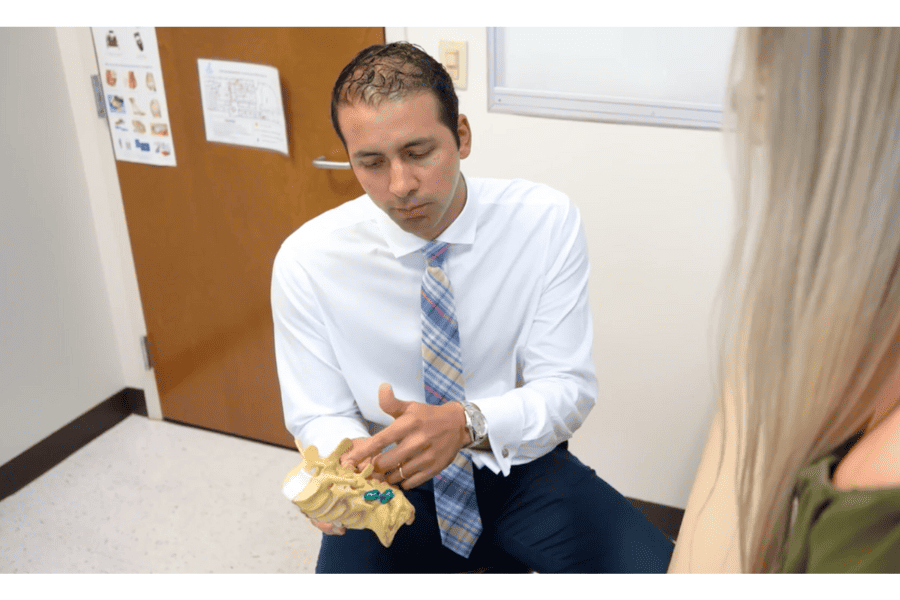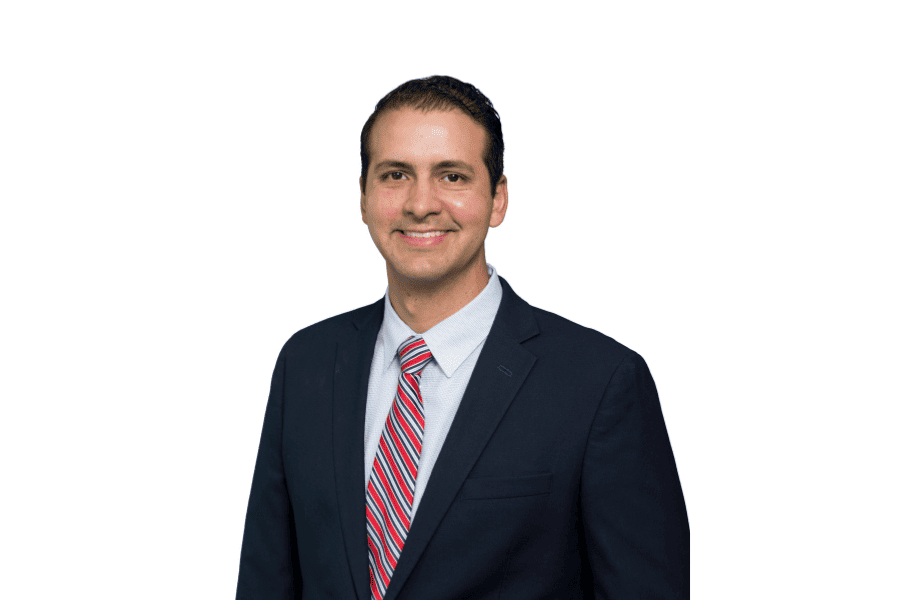Sharon Howell’s Journey: Microdiscectomy—A Minimally Invasive Solution for Spinal Disc Issues with Dr. Rivera
Back pain can be debilitating, affecting our daily lives and overall well-being. One common cause of back pain is a herniated disc. In severe cases, a microdiscectomy, a surgical procedure performed to relieve pressure on the spinal nerves, may be recommended.
For Sharon Howell, a patient of Sebastian Rivera, M.D., a board-eligible orthopaedic spine surgeon at Orlando Orthopaedic Center, a microdiscectomy is just what the doctor ordered to get her back to doing the things she loved.
“I was in a wheelchair for six months and couldn’t go anywhere,” says Sharon. “I can go anywhere I want now. I’m not walking with a cane or even a walker, nothing.”
What is a Microdiscectomy?
Sebastian Rivera, M.D.
Specializing in: Orthopaedic Surgery of the Spine
A microdiscectomy is a minimally invasive surgical procedure used to treat herniated discs in the spine. It focuses on removing a portion of the damaged disc that may be pressing against spinal nerves, causing pain, numbness, or weakness. Unlike traditional open-back surgery, a microdiscectomy utilizes small incisions and specialized instruments, including a microscope or magnifying lenses, to enhance precision and minimize tissue damage.
Who Needs a Microdiscectomy?
Microdiscectomy is typically recommended for individuals experiencing severe pain and functional limitations due to a herniated disc who have failed conservative treatment.. Candidates for this procedure may have:
- Persistent Leg Pain: If a herniated disc compresses a nerve root in the lower back, it can cause radiating pain, known as sciatica, down the leg. A microdiscectomy may be considered when conservative treatments like physical therapy or medication fail to alleviate the symptoms.
- Nerve Impingement: When a herniated disc puts pressure on spinal nerves, it can lead to weakness, numbness, or tingling in the affected area. Surgery may be recommended if symptoms progress or if there is evidence of nerve damage.
- Loss of Bladder or Bowel Control: In rare cases, severe disc herniation can cause bladder or bowel control loss. This condition, called cauda equina syndrome, is considered a medical emergency, requiring immediate surgical intervention like a microdiscectomy.
Recovery Time from a Microdiscectomy
The recovery time from a microdiscectomy varies from person to person, depending on factors such as the extent of the surgery, overall health, and adherence to postoperative instructions. However, most individuals can expect the following general timeline:
- Hospital Stay: Microdiscectomy is often performed as an outpatient procedure, allowing patients to return home the same day. However, depending on the patient, a short hospital stay of one to two days may sometimes be required.
- Immediate Postoperative Period: Patients may experience pain or discomfort at the incision site after surgery. Medications will be prescribed to help manage pain, and restrictions on physical activities like lifting, bending, or twisting may be advised.
- Early Recovery Phase: During the first few weeks, patients are encouraged to increase their activity levels while avoiding strenuous activities. Physical therapy may be recommended to improve flexibility, strength, and posture.
- Full Recovery: Most individuals can expect significant improvement within six weeks post-surgery, with a gradual return to normal activities. However, following the surgeon’s guidance is essential to prevent re-injury and ensure a successful recovery.
“I feel like a new person. When your mother is having trouble, you do everything to help her. That’s what he did for me,” shares Sharon of Dr. Rivera. “He’s an excellent doctor, very pleasant and nice. He’s not just my doctor; he’s my son. Because only my son would go out of his way to get me in a good position.”
What happens during Shoulder Arthroscopy?

Take the Next Step to Relieve Back Pain
Microdiscectomy offers a minimally invasive solution for individuals suffering from the debilitating effects of a herniated disc. This surgical procedure can provide substantial pain relief and restore functionality by removing the pressure on spinal nerves. While recovery time varies, with proper postoperative care and adherence to rehabilitation recommendations, most patients can expect a successful recovery and a return to an active and pain-free life. If you suspect you need a microdiscectomy, consult a qualified spine specialist to determine the best treatment for your specific condition.
When asked how she’s feeling now, Sharon says, “I feel like a new person.”



